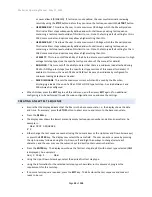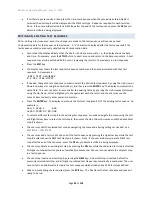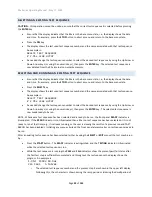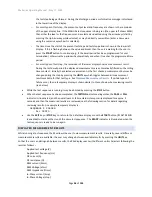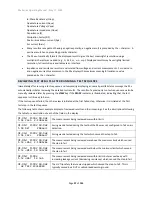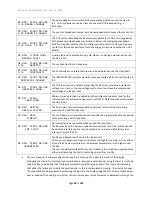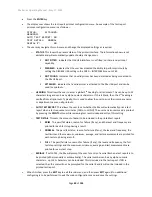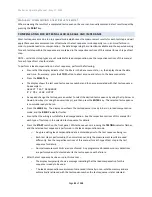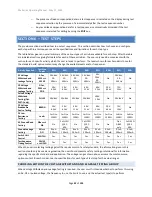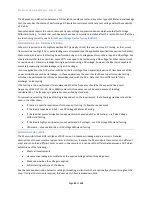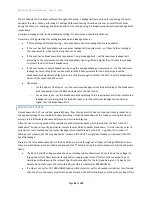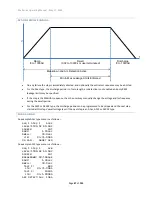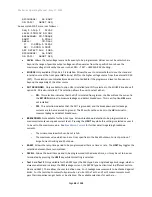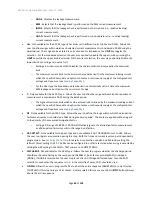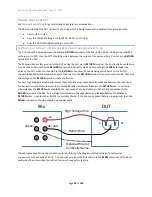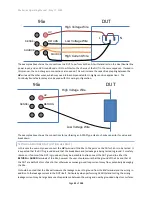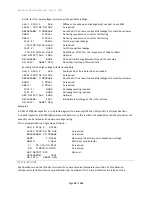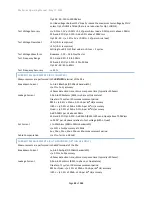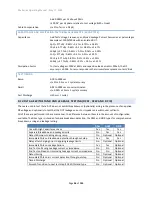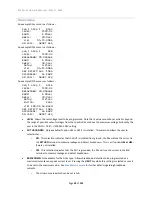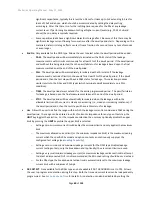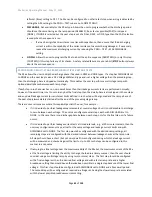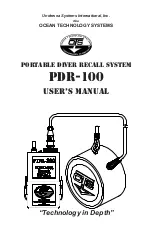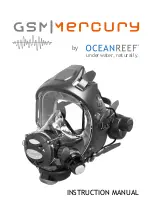
95x Series Operating Manual - May 17, 2022
Page
46
of
155
Arcing should not be confused with flashover (which is a breakdown), arcing can be very slight and is often not
easily visible, corona is a form of arcing, but the arcs do not extend entirely across the air gap and so is also called
partial discharge or partial breakdown.
Some safety standards do not require detection of arcing; however, users often decide to include arc detection
because the presence of arcing is often an indication that although the DUT passes breakdown detection at this
time it may fail in the future. The 95x allows the user to select either-
a)
To not detect arc current.
b)
If arc current is detected, the DUT is not failed; only the presence of arcing is reported.
c)
If arc current is detected fail the DUT.
If enabled, the 95x continuously measures the AC (RMS) current with band-pass filtering of 50KHz to 5MHz over
consecutive 4us periods and compares each measurement with the user set arc current limit. If the limit is
exceeded for more than the user set number of consecutive 4us periods, arcing is detected.
If arc detection is required by the user, typically a limit setting of 10mA for 4us is used, a lower current limit
increases the sensitivity, increasing the current and/or time decreases the sensitivity. Although a setting as low as
1mA may be made, this setting is particularly sensitive to pickup of RF interface (e.g., local radio stations) so is not
recommended.
If arcing occurs and the DUT has significant capacitance, the DUT capacitance may provide most of the energy for
the arcing and there may be little, if any, HF current flow from the DUT. In these cases, it may not be possible to
detect arcing by current flow. This is generally not the case for DUT capacitances below a few nF, and generally is
the case above a few 100nF, but this is very dependent on the DUT and wiring.
AC VOLTAGE WITHSTAND AND LEAKAGE TESTING (AC EZ, ACW AND ACCAP)
These are used to test that a DUT does not exhibit breakdown or (optionally) arcing in the presence of an applied
AC voltage, and optionally to test that the DUT leakage current, impedance or capacitance is within user set limits.
All are performed in the same manner; the difference between them is in the amount and form of configuration
available. The ACez type is intended for basic breakdown detection; the ACW type for comprehensive breakdown,
arcing and leakage testing; the ACCAP type for breakdown and capacitance value testing. The ACW type can be
configured to provide the same testing as the ACez type.
ACez
ACW
ACCAP
Separate Breakdown and Leakage Current Limits
No
Yes
Yes
Immediate FAIL on Breakdown detection throughout step
Yes
Yes
Yes
Dual Leakage Current and/or Impedance Min/Max Limits
No
Optional
No
RMS Leakage Current and/or Impedance Min/Max Limits
Yes
Optional
No
In-Phase and/or Quadrature Leakage Current and/or Impedance Min/Max Limits
No
Optional
No
Capacitance and optional Dissipation Factor Min/Max Limits
No
No
Yes
Immediate FAIL on Min/Max Limit detection during dwell
Yes
Yes
Yes
Detect Arcing
No
Optional Optional
Immediate FAIL on arc current detection throughout step
No
Optional Optional
Timed Discharge
No
Optional Optional
Smooth Transition to next test step if also AC withstand type
No
Optional Optional


